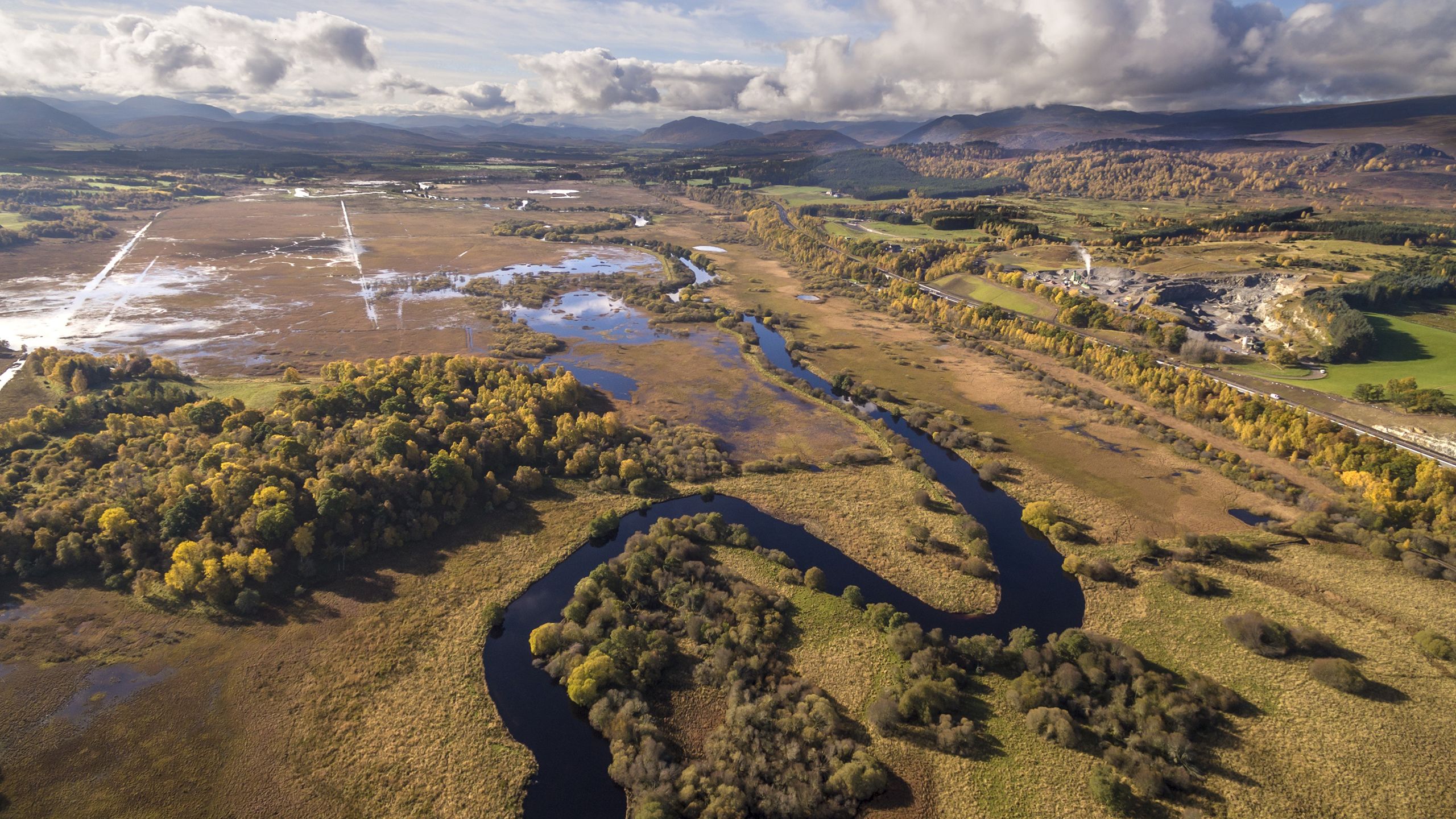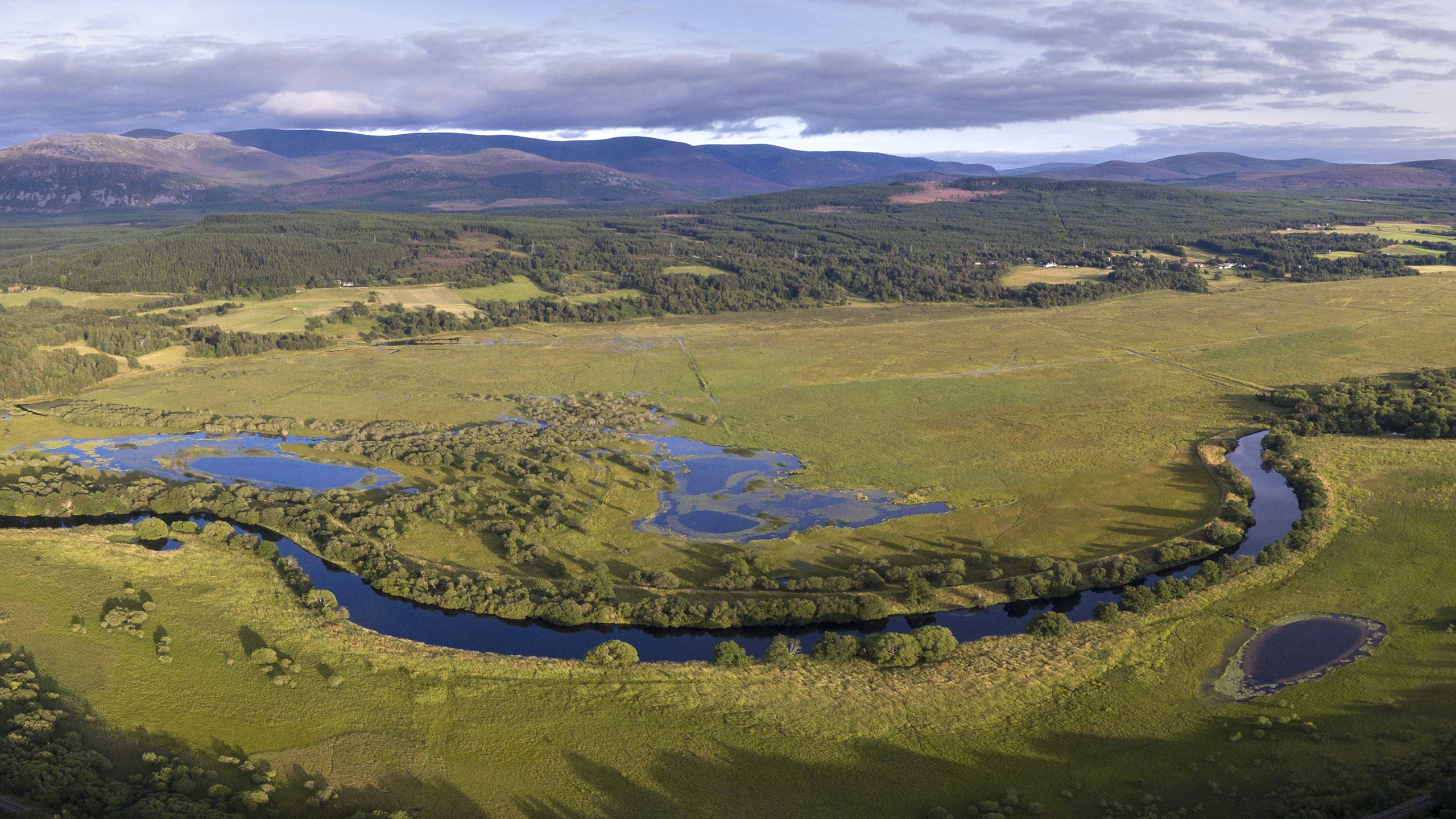Return to the wild
Ambitious collaborations are bringing biodiversity back to the Scottish Highlands

In 2024, for the first time in over 400 years, two beaver kits were born in the wild in the Cairngorms National Park. It was a big moment for a team of conservationists who have eagerly watched the progress of the beaver families they’ve released in the area over the past year.
“For two beaver pairs to have bred successfully proves the work that has gone into identifying suitable habitat and locations has been worthwhile," said Dr Roisin Campbell-Palmer, Head of Restoration at the Beaver Trust.
Beaver eating bracken. Credit Elliot McCandless/Beaver Trust
Beaver eating bracken. Credit Elliot McCandless/Beaver Trust
The reintroduction of beavers is one of many activities supported by Cairngorms Connect, a project with a 200-year vision to transform this area of the Scottish Highlands by regenerating habitats and species.
It’s also the kind of meaningful, collaborative work the Centre for Landscape Regeneration (CLR) is all about.
The CLR is an interdisciplinary partnership of economists, social and physical scientists, engineers, biologists and computer scientists working to provide data and knowledge to support landscape regeneration across the UK.
The partnership is collaborating with Cairngorms Connect by supporting their efforts, learning from their experiments, and providing scientific evidence for the project's impact.
Professor David Coomes. Credit Nick Saffell
Professor David Coomes. Credit Nick Saffell
“I’m excited that we’re all working together as a huge team to come up with better evidence for what could work for restoration projects.”
Professor David Coomes, Co-Director the Centre for Landscape Regeneration
Coomes, who co-directs the Centre alongside Professor Emily Shuckburgh, adds: “By partnering with Cairngorms Connect, we are part of this amazing long-term programme to enhance this wonderful part of the world. We are bringing together research evidence and local knowledge to benefit landscapes, in this case the Cairngorms.”
The partnership between the CLR and the Cairngorms Connect Science and Monitoring programme includes connecting with local communities, land-use scenario modelling, and measuring changes in biodiversity and ecosystem functioning, including bird and plant surveys and mapping of young trees in woodland expansion areas. Tracking biodiversity patterns, tree growth and accumulation of carbon in the soil will help the teams figure out what impacts the restoration actions are having, and where.
Britain’s biggest nature restoration project
The overarching plan is to bring biodiversity back to 600 square kilometres of the Cairngorms National Park from the River Spey to the summit of Ben MacDui. It’s the largest restoration project in Britain, and over 5,000 species have been identified here – around 20% of which are nationally rare or scarce and some recorded nowhere else in Britain.
The Cairngorms National Park, classified as a protected area by the International Union for Conservation of Nature (IUCN), has experienced significant biodiversity loss, as well as damage to its important blanket bogs. The UK’s peatlands store at least 20 times more carbon than all its trees, but only about 13% of them remain undamaged.
The Cairngorms National Park features 10,000 hectares of peat-rich bog. Credit scotlandbigpicture.com
The Cairngorms National Park features 10,000 hectares of peat-rich bog. Credit scotlandbigpicture.com
Alongside support from the Cairngorms national Park Authority, four landowners - Forestry and Land Scotland, RSPB Scotland, NatureScot, and Wildland Ltd – are integral to the Cairngorms Connect project. It’s their land that will see expanded woodlands, repaired blanket bogs, rewilded rivers, restructured plantations, natural regulation of animal populations and the re-introduction of animals such as beavers and wild cats.
Resources for restoration on such an impressive scale have come from the Endangered Landscapes & Seascapes Programme, managed by the Cambridge Conservation Initiative in partnership with Arcadia .
A pine sapling grows on heather moorland. Cairngorms Connect has planted 1,253 hectares of new native woodland over the past five years. Credit scotlandbigpicture.com
A pine sapling grows on heather moorland. Cairngorms Connect has planted 1,253 hectares of new native woodland over the past five years. Credit scotlandbigpicture.com
“The area has great potential for restoring nature on a large scale. Until recently, high deer numbers that were maintained for hunting have kept the forest from coming back, but millions of young trees are now establishing naturally across the landscape, thanks to the work of Cairngorms Connect," says Coomes, adding:
"By working together, we can better support the landscape to benefit all.”

A dynamic research hub
The CLR’s goal is to make a difference to how landscape regeneration is designed, implemented, scaled up and supported by people and policy.
It’s a collaborative research hub that’s home to over 70 researchers who focus on three iconic UK landscapes: the Cambridgeshire Fens, the Lake District and the Cairngorms.
The CLR is led by the University of Cambridge along with RSPB, NIAB and the UK Centre for Ecology and Hydrology (UKCEH). It's funded by the Natural Environment Research Council (NERC) as part of their Changing the Environment Programme, which aims to bridge the gap between researchers, communities and practitioners to solve complex environmental challenges.
Although ecological restoration has a diverse community of supporters, it’s not without its challenges.
“People can make money from land-use practices that damage biodiversity, so unless you get the incentive structures right, you’re not going to bring nature back,” says Coomes.
He believes a cultural shift is needed to change the way we think about nature and the economy, so we can build the health of nature into our measures of national success.
“Over the last 20 years or so, we researchers have worked to reframe the way people, including economists, think about nature – not just as something we’re passionate about, but something that’s necessary,” he says.
With landscape regeneration projects such as Cairngorms Connect underway across the UK and Europe, Coomes is hopeful for the future.
“At the Centre for Landscape Regeneration, we are passionate about finding solutions to the interlinked climate and biodiversity crises through our research," says Coomes, adding: “It’s vital that all those connected to a landscape are involved to enhance its future. Support from the Endangered Landscapes and Seascapes Programme provides exciting opportunities to all work together to make our countryside a better place for people and nature.”
Pine martens are one of 5,000 identified species that call the Cairngorms home. Credit scotlandbigpicture.com
Pine martens are one of 5,000 identified species that call the Cairngorms home. Credit scotlandbigpicture.com
Find out more: Centre for Landscape Regeneration
Research enquiries: Professor David Coomes
Layout by Jacqueline Garget
Published October 2024
The text in this work is licensed under a Creative Commons Attribution 4.0 International License






